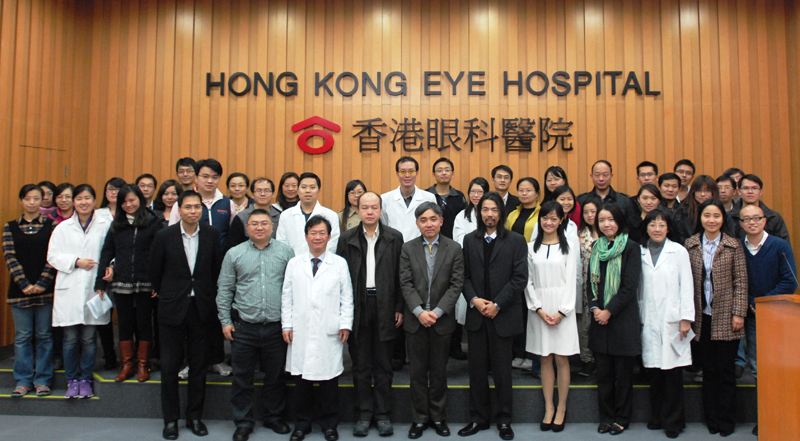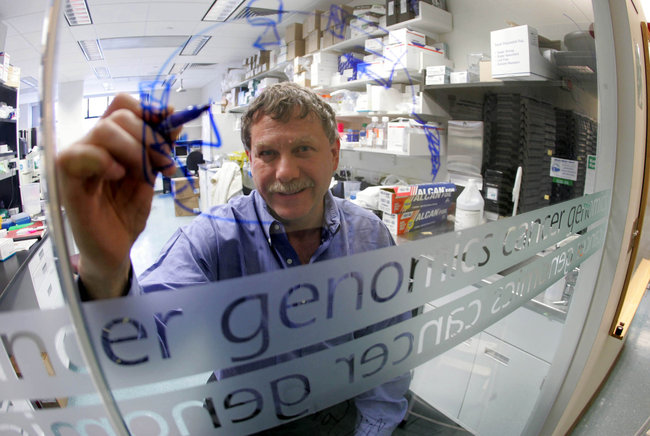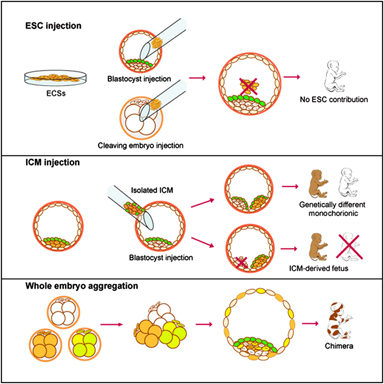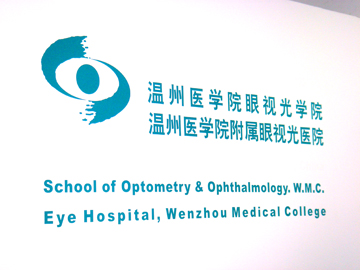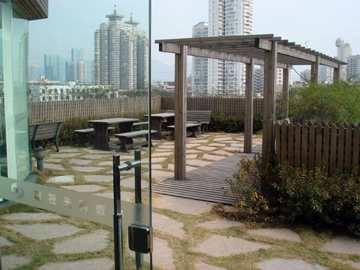I was invited and supported by the Purdue Research Foundation (PRF) International Travel Grant to give a Plenary Lecture at the Symposium on Biology of Ophthalmology 2011 which took place in the Hong Kong Eye Hospital from 11-13th December 2011. The event was organized by the Department of Ophthalmology and Visual Sciences at the Chinese University of Hong Kong (CUHK), a leading eye research center in Asia.
The symposium covers a wide variety of topics from clinic research, ophthalmic imaging, genetic screen to very basic eye research. Together with Dr. Motokazu Tsujikawa from Osaka University Ophthalmology, we shared our vision on studying retinal degeneration using zebrafish. Dr. Liyun Zhang, currently a Charles Kelman MD Scholar of the International Retinal Research Foundation whom works in my laboratory, also shared her future plans on studying disease-causing gene network of fish model of human retinal degeneration. It is really impressive that many physicians can perform top clinical service and yet can spare time to do high-quality research.
Both Liyun and I chaired sessions on various aspects of exciting ophthalmic research from different research groups, and through these interactions, we have met new and old friends, including Dr. Rosa Chan from City University of Hong Kong who is studying computational modeling of brain activity, a group of very dedicated and accomplished scientists including Drs Yan, Hou and Zhou from the Eye Hospital at Wenzhou Medical College where I also visited during the trip, friends from Osaka Ophthalmology including Drs. Kohji Nishida, Yasushi Ikuno and Motokazu Tsujikawa, Dr. Carol Cheung from Singapore, Dr. Richard Choy and Gary Yam, among many others from CUHK and friends from the Joint Shantou International Eye Center (JSIEC) at Shantou University, etc.
Right after the symposium, I led a 2-day workshop on “Frontiers in human genetics and eye research” with about 15 students from several locations. My goal was to help students who have only been focused on a narrow genetic aspect and/or clinical aspects of ophthalmology to put their knowledge on a wider perspective. Each day we read and presented a paper about either human genetics and eye research using zebrafish model in depth. This time we discussed two papers:
- Zhong Q, Simonis N, Li QR, Charloteaux B, Heuze F, Klitgord N, Tam S, Yu H, Venkatesan K, Mou D, Swearingen V, Yildirim MA, Yan H, Dricot A, Szeto D, Lin C, Hao T, Fan C, Milstein S, Dupuy D, Brasseur R, Hill DE, Cusick ME, Vidal M. Edgetic perturbation models of human inherited disorders. Mol Syst Biol. 2009;5:321. Epub 2009 Nov 3. PubMed PMID: 19888216; PubMed Central PMCID: PMC2795474.
- Kay JN, Roeser T, Mumm JS, Godinho L, Mrejeru A, Wong RO, Baier H. Transient requirement for ganglion cells during assembly of retinal synaptic layers. Development. 2004 Mar;131(6):1331-42. Epub 2004 Feb 18. PubMed PMID: 14973290.
I was really impressed with many of them who were thinking about the new ideas and tools in a critical manner and was very engaged in a lively discussion.
It was a gratifying experience to interact with and see many students fro the Asia region who are laying down the foundation for and conducting great research! Kudos to the organizers including Drs. Calvin Pang and Chris Leung from the CUHK for putting together an excellent conference program to make the whole trip possible!
